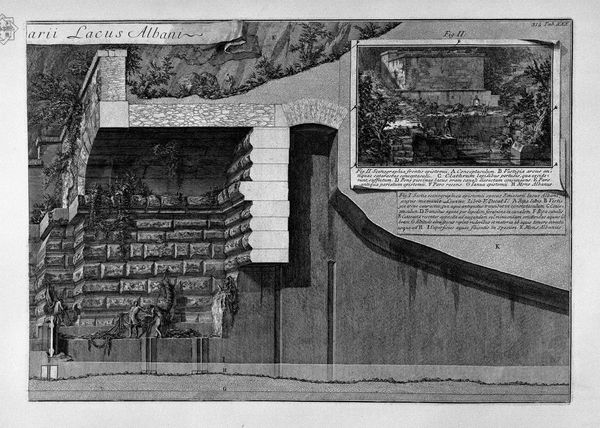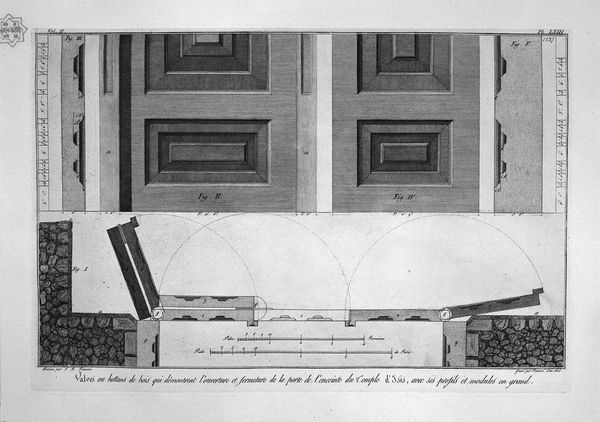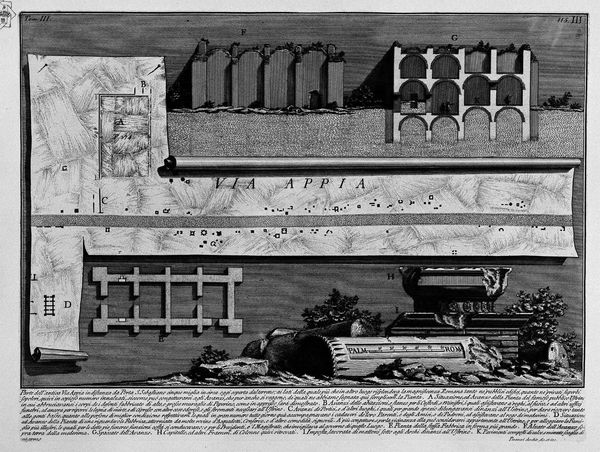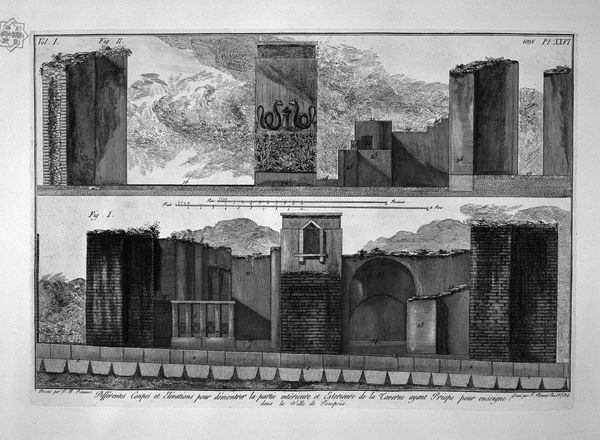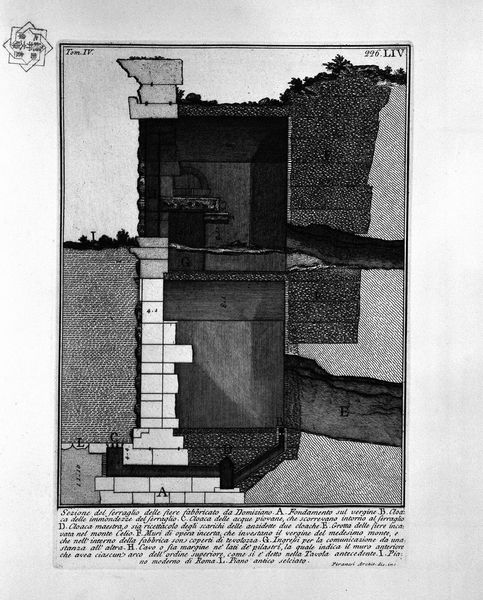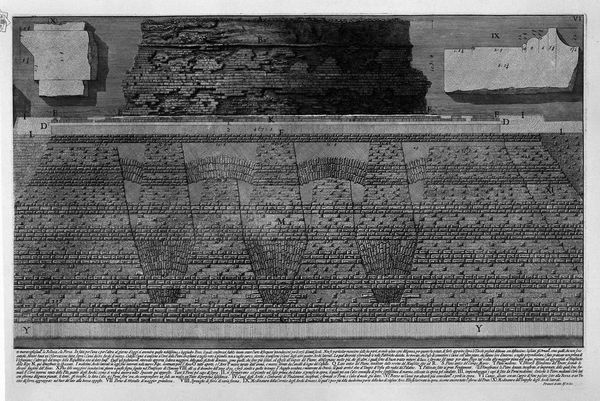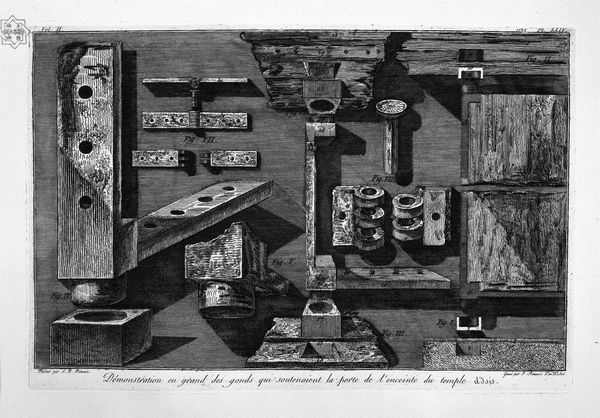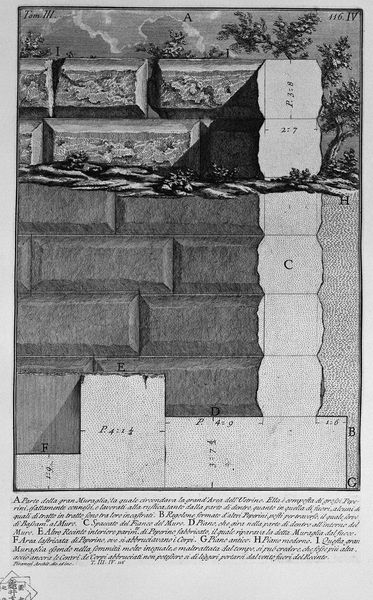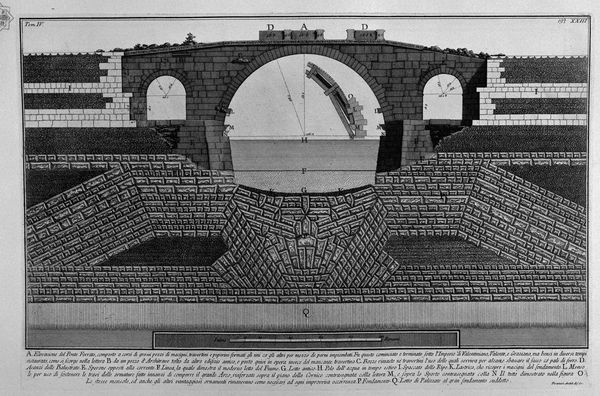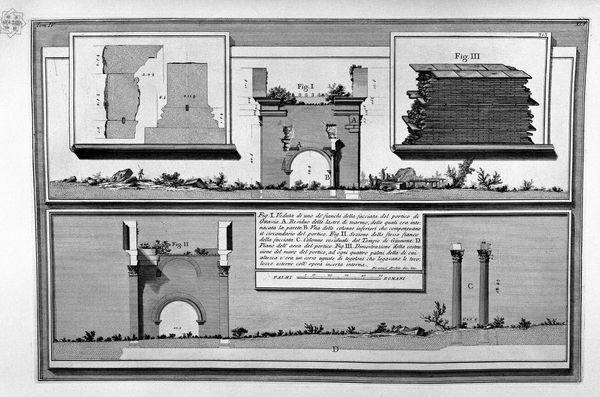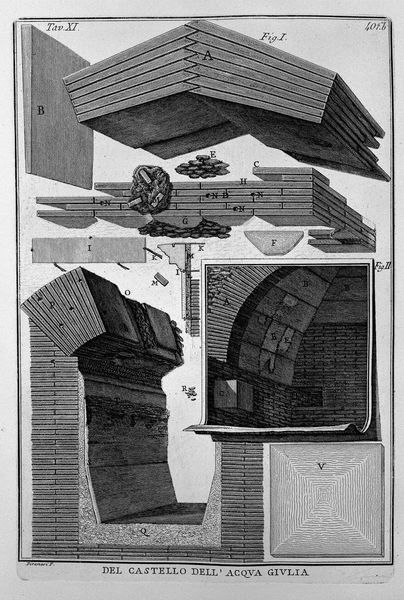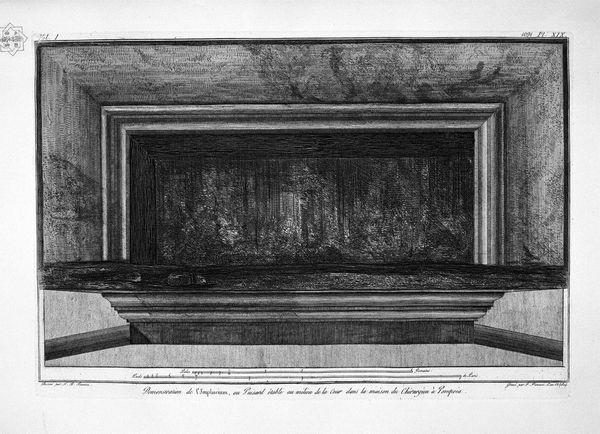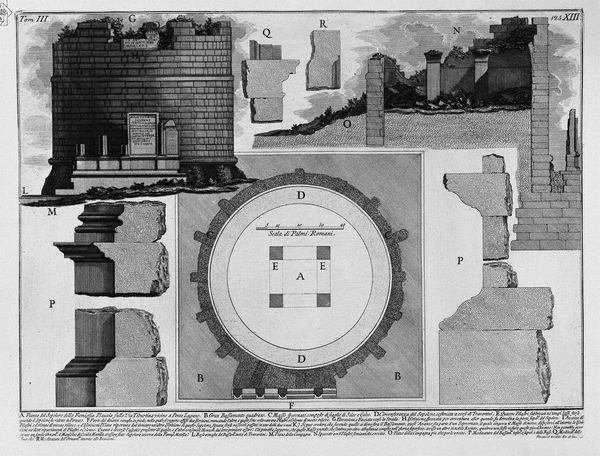
drawing, print, etching
#
drawing
#
baroque
# print
#
etching
#
ancient-mediterranean
#
black and white
#
carved
#
line
#
monochrome
Copyright: Public domain
Curator: Here we have "The Roman Antiquities, t. 2, Plate V," an etching by Giovanni Battista Piranesi, dating back to 1756. Editor: My immediate reaction is... weight. The sheer mass of those stones, even depicted in monochrome, feels palpable. You can almost feel the coolness radiating from the ancient rock. Curator: Absolutely. Piranesi was a master of conveying the monumentality of Roman architecture. He wasn't just documenting ruins; he was interpreting their grandeur and, some would say, even exaggerating their scale to emphasize the empire's past power. He's essentially making the stones speak. Editor: And look at the precision of the lines! The detail is incredible. Each stone seems to have its own story etched onto its surface, its own unique texture revealed through these intricate lines. You almost forget it's just ink on paper. Curator: Piranesi was incredibly skilled. This print comes from his series "Le Antichità Romane," a comprehensive visual survey of Rome's ancient structures. Through these detailed studies, he sought to recreate and share his romantic vision, sometimes with imagined elements, which later informed archaeological reconstruction. Editor: There is this tension between ruin and monument... Even in decay, the architecture holds its imposing dignity. In truth it captures an aesthetic that would linger on within art for ages after. It has a melancholy to it, right? As though all greatness must one day pass into decline. Curator: Exactly! Piranesi tapped into the zeitgeist of his time. The rise of the Grand Tour increased public interest in Roman antiquities. Piranesi was savvy and created these views to feed the market, becoming quite successful, by creating highly graphic visions of what was thought of a powerful past. Editor: It is that drama, and depth that makes it linger in the mind. The way the light falls, the textures of the stones, makes us contemplate more than architectural documentation. More that stone. Something eternal and somber. Curator: In a way, Piranesi’s legacy goes beyond just historical accuracy. It's about how images of power circulate, evolve, and shape our understanding of the past, regardless of what is there today. It brings the ruins alive. Editor: And, perhaps, a timely reminder that even the mightiest structures are, in the end, just stones—albeit extraordinarily impressive and meticulously rendered ones. Curator: Well said. A visual reminder of history and time's passage, etched in black and white for eternity.
Comments
No comments
Be the first to comment and join the conversation on the ultimate creative platform.
